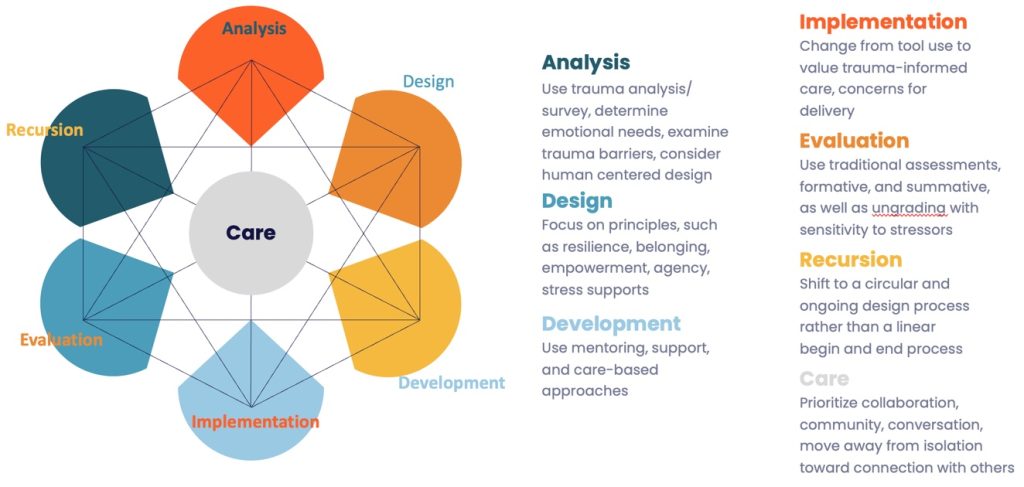by MU Instructional Designers
Reviewed April 15, 2025
4-6 min read
The ADDIE model is widely used in many types of instructional design, especially course design. It consists of the five steps outlined in the video below.
These five steps provide the framework for developing and improving a course over time. Each step provides critical information for the next step.
- Analyze – Determine the goals and learning objectives. Consider the needs of your learners.
- Design – Incorporate Universal Design for Learning (UDL) concepts as you are designing the activities for the course. That way you can ensure that diverse learners, who acquire information in various ways, will have access to the content for your course.
- Develop – Continue to consider UDL guidelines as you develop content and assessments.
- Implement – Make adjustments as necessary to meet the needs of your learners.
- Evaluate – Review feedback and take time to reflect on how the course went. Were there areas where students struggled? Do you need more scaffolding in some areas? Did your assessments accurately measure your objectives? What changes do you need to make before the course runs again?
ADDIE + UDL
This instructional design model aligns well with the principles of UDL. At each stage of ADDIE, you need to keep in mind the diversity of your learners’ affective, recognition, and strategic brain networks. Jodie Black and Eric J. Moore (2019) have developed specific questions for each stage to help you consider that diversity while planning: ADDIE Model Module Plan Worksheet.
Trauma-Informed ADDIE
Educators are now more than ever aware of the role student mental health plays in the learning process. Multiple factors outside the classroom can impact a student’s ability to engage with course content and/or peers. To address this, the ADDIE model has been expanded to include a trauma-informed approach, placing student care at the core of the development process. This graphic from the Educause article “TI-ADDIE: A Trauma-Informed Model of Instructional Design” provides a quick snapshot of how this information can be integrated into the design process.
